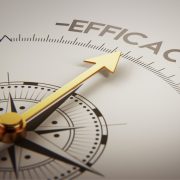The economic future looks newly promising because the innovation and economic energy that comes from the free initiative of individuals and small groups is casting off the constraints imposed by big-company bureaucracy and government regulation.
Curt Carlson was President and CEO of SRI International in Silicon Valley from 1998 to 2014. During this time, SRI’s revenue tripled and SRI became recognized as one of the world’s most productive innovation enterprises, having helped create Siri, HDTV, Intuitive Surgical, and many other world-changing innovations. Dr. Carlson helped create over two dozen new companies and has advised ministers and prime ministers around the world on innovation practices and innovation policy. He is currently a member of the scientific advisory boards of the governments of Singapore and Taiwan.
Scale Is A Barrier To Innovation.
In a recent interview with Jeff Saperstein1, he talked about the difficulties big companies and big governments face today in encouraging innovation.
Think about the enormous total resources big companies have. They have brilliant people. What encumbers them is not the people, it is not the technology, but it is really their inability to put together nodes within the company—a small community within a bigger community—that can actually behave this way. At SRI, we created an incubator, which was run by Silicon Valley rules, not run by the $500 million part of our business. They had different rules, metrics, and license to do everything. Running by those local, start-up rules, we were able to issue or create one multibillion-dollar business after another. Most big companies find it impossible to do that.
Managing The Signal To Noise Ratio.
He talked about one of his themes, the “signal to noise ratio” within organizations, and the challenge in focusing on the signal (true information that points towards innovation opportunities) versus noise (bureaucratic rules, politics, infighting, HR, planning and all the other corporate and governmental activities that get in the way of innovative activity). His answer is global interconnectedness of agile and nimble teams of the best players.
Let’s assume a government and an organization remove the noise to enhance innovation. Once you get that in a reasonable position, the big problem is how do you identify those opportunities and assemble a team that can actually solve them? Increasingly, the best talent is all over the world, so increasingly the whole idea is the guy who wins is the guy who pulls together the best team wherever they come from, and actually knows what they are doing, and finds the signal in the noise, and gets out there first. And, if you can do that, you can create a billion-dollar business today.
The Repeal Of Scale Economics.
Historically, scale has been a barrier to entry for new companies and a barrier to innovation. Classical economies of scale resulted from increasing the size of a producing business unit so that costs were spread over a larger unit volume, reducing unit costs and creating an entry barrier to new start-ups. Consultants talked about the experience curve: ascend it by making more and more units, and the accumulated experience and learning of doing so will increase expertise and efficiency and create another barrier to entry.
Large scale companies created another form of barrier to entry by clogging up all the established distribution channels and leaving no room for small companies, small brands and new independent entrants. Big manufacturers, for instance, would buy up all the rights to shelf space at big stores like Walmart, both raising the price of retail distribution and leaving no physical room for the innovative start-ups looking for shelf visibility.
Today, small companies can get their scale from the Internet. They can access world class computing power at marginal unit cost from cloud providers like Amazon Web Services, and can find leading edge analytics and algorithms and open A.I. from similar sources. They can have equal computing power to the largest companies. They can find “supply chain as a service” from a set of vendors who set up, automate and monitor supply chains. And they can sell direct to consumers on their own websites, or on amazon.com or on Alibaba. They can contract with manufacturers who will finance their inventory and ship into the supply chain on demand, reducing downstream storage and warehousing costs to a minimum.
Scale is no longer a barrier to innovation. The result is the creation of new opportunities for the small companies and teams that Curt Carlson describes. They are now unleashed to pump ideas-based innovation into the economy at speed.
More Barriers Are Being Removed.
The repeal of the laws of economies of scale is just one of several convergent economic developments that point to an explosion of individual economic freedom and entrepreneurial innovation. The others include:
Augmentation: The use of A.I., networks and global exchange platforms to augment the capacity of individuals and small teams.
Disintermediation: The elimination of middlemen, institutional bureaucracy and rules, and proprietary infrastructure in order to increase speed, lower cost and reinforce security through peer-to-peer exchange on the blockchain.
Interconnectedness: The connections made possible by the internet and new connection and communication technologies makes every individual smarter and actually creates, in and of itself, an innovation ecosystem of unpredictable yet limitless productivity.
Well be writing about these convergent developments in future posts.
1 In The Interconnected Individual: Seizing Opportunity in the Era of AI, Platforms, Apps, and Global Exchanges; Business Expert Press, To be released July 2018













